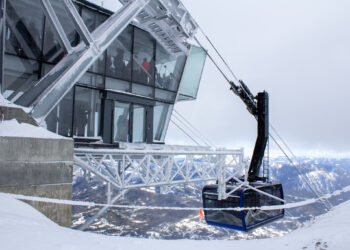By Marshall Swearingen MSU News Service
BOZEMAN – In Darla Goeres’ lab on the third floor of Barnard Hall at Montana State University, the beer on tap is Sierra Nevada Pale Ale. But when it comes out of the keg with a frosty head, it’s not for drinking.
Instead, Goeres and her collaborators at the Standard Biofilm Methods Laboratory in MSU’s Center for Biofilm Engineering use the brew to study how to improve the taste of beer everywhere, by finding ways to better remove taste-altering biofilms from the plastic lines that carry beer from keg to tap.
“When you get a beer and have a sip and think ‘that doesn’t taste right,’ it’s probably because of biofilm,” said Goeres, an associate research professor in the Department of Chemical and Biological Engineering in MSU’s College of Engineering.
The biofilm forms when harmless bacteria, brewing yeast and other residual solids form a coating on the inside of draught lines, she said.
Currently, the Boulder, Colorado-based Brewers Association recommends that beer distributors clean draught lines biweekly by flushing them with disinfectant and water, Goeres said. But knowing how often to clean the lines, and judging the results, can be a challenge.
“[The brewing community] wants actual data to support their recommendations and ultimately to improve the cleaning regimen,” she said. “The goal is to provide their customers with the highest quality beer possible.”
To study the biofilm, Goeres and her team partnered with local beer distributors to construct a laboratory system that mimics the draught systems commonly found in bars, complete with long sections of tubing.
“They helped us get all the parts and ensured we assembled the laboratory system properly,” she said. “They have also been great in troubleshooting any problems.”
The researchers then added specific strains of bacteria—those that commonly cause the beer biofilm to form—into the draught lines coming out of the keg of pale ale, which was donated by Sierra Nevada Brewing Company. In a bar or brewery setting, the bacteria are introduced when couplers or other equipment aren’t totally clean when switching out kegs or tap handles, Goeres said.
In recent weeks, the researchers periodically flushed the beer through multiple plastic lines of different sizes and materials. Then they closed the tap, unhooked the tubing and cut one-inch samples from each of the different tubing segments.
Lindsey Lorenz, who graduated from MSU in 2004 with a bachelor’s in microbiology and now works with Goeres as a research assistant, applies a stain to the tubing samples. The stain causes the bacteria and yeast to light up under the laser of a specialized microscope, allowing her to observe in detail the structure of the biofilm’s different components.
“Using the microscope allows us to see how the bacteria and yeast are interacting and forming biofilm in the tubing,” she said.
Kelli Buckingham-Meyer, a research assistant who earned her bachelor’s in microbiology from MSU in 1997, agitates the other tubing samples in a sterile solution to remove the biofilm, then cultivates the biofilm bacteria on small plates by feeding them a beer-based food. When the bacteria grow and form colonies visible to the naked eye, she counts them.
“We can back-calculate the amount of biofilm in the tubing from that,” she said.
Lorenz and Buckingham-Meyer will present the research at the Montana Biofilm Science and Technology Meeting, which will be held in Bozeman, July 18-20. The annual conference, hosted by the Center for Biofilm Engineering, brings members from the center’s Industrial Associates program together with MSU faculty and invited speakers to discuss the latest biofilm research, both at MSU and at other labs.
Goeres’ research is funded by the Brewers Association and is being conducted in partnership with NSF International, an organization specializing in the development of public health standards and certification programs. It’s an example of the industry partnership that the Center for Biofilm Engineering is well known for, and that will be on display at the conference in July, said CBE Director Matthew Fields.
Within a year, Goeres and her team hope to publish their results, which could inform the development of new products or processes for cleaning draught lines.
“We’re able to take something that’s more complex than most people realize, bring it into the lab to understand what’s going on, and develop tools so that companies can come up with solutions,” she said.















